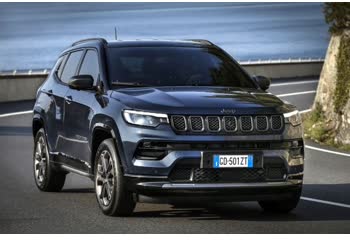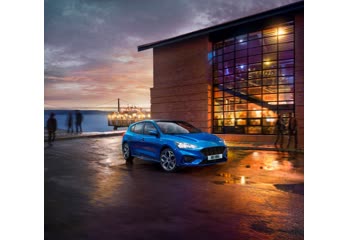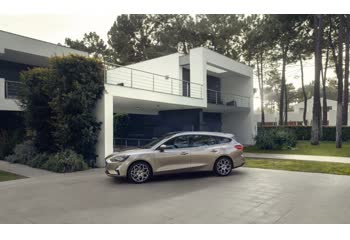Everything you need to know about specifications and performance - Jeep Compass 2018 - Trailhawk 2.0 Multijet (170 Hp) 4x4 Automatic

Overview:
What is the engine capacity of a Jeep Compass 2018?
The engine capacity of the Jeep Compass 2018 is 1956.
Jeep Compass 2018 How many horsepower?
The engine power of the Jeep Compass 2018 is 170 Hp @ 4000 rpm..
What is the Jeep Compass 2018 engine?
Jeep Compass 2018 engine is EBS. (Click to see other cars using the same engine)
How much gasoline does a Jeep Compass 2018 consume?
The Jeep Compass 2018 consumes 6.6 liters of gasoline per 100 km
General:
Brand: Jeep
Model: Compass
Generation: II (MP)
Modification (Engine): Trailhawk 2.0 Multijet (170 Hp) 4x4 Automatic
Start of production: September, 2018
End of production: July, 2020
Powertrain Architecture: Internal Combustion Engine
Body type:Sports Utility Vehicle (SUV)
Seats: 5
Doors: 5
Engine:
Engine systems: Start & Stop System
Power: 170 hp @ 4000 rpm.
Power per litre: 86.9 hp/l
Torque: 380 nm @ 1750 rpm.
Engine Model/Code:EBS
Engine displacement: 1956
Number of cylinders: 4
Engine configuration: Inline
Number of valves per cylinder: 4
Fuel injection system: Diesel Commonrail
Engine aspiration: Turbocharger, Intercooler
Valvetrain: DOHC
Engine oil capacity: 4.2 l
Coolant: 6.5 l
Engine layout: Front, Transverse
Cylinder Bore: 83 mm
Piston Stroke: 90.4 mm
Compression ratio: 16.5:1
Performance:
Fuel Type: Diesel
Fuel consumption (economy) - urban: 7.8 l/100 km
Fuel consumption (economy) - extra urban: 5.9 l/100 km
Combined fuel consumption (WLTP): 8 l/100 km
Fuel consumption (economy) - combined (NEDC): 6.6 l/100 km
Fuel consumption (economy) - urban (NEDC): 7.8 l/100 km
Fuel consumption (economy) - extra urban (NEDC): 5.9 l/100 km
Fuel consumption (economy) - combined: 6.6 l/100 km
Emission standard: Euro 6d-TEMP
Acceleration 0 - 100 km/h: 10.1 sec
Acceleration 0 - 62 mph: 10.1 sec
Maximum speed: 190 km/h
Weight-to-power ratio: 9.6 kg/Hp, 104.2 Hp/tonne
Weight-to-torque ratio: 4.3 kg/Nm, 233 Nm/tonne
Acceleration 0 - 60 mph: 9.6 sec
Space:
Kerb Weight (kg): 1631-1832
Max. weight (kg): 2223
Max. roof load: 68 kg
Max load (kg): 391-592
Trunk (boot) space - maximum: 1251 l
Trunk (boot) space - minimum: 438 l
Permitted trailer load with brakes (12%): 1500 kg
Fuel tank capacity: 60 l
AdBlue tank: 13 l
Permitted trailer load without brakes: 525 kg
Permitted towbar download: 75 kg
dimensions:
Ramp-over (brakeover) angle: 23.7°
Wading depth: 483 mm
Length: 4398 mm
Width: 1819 mm
Height: 1660 mm
wheelbase: 2636 mm
Front track: 1540 mm
Rear (Back) track: 1540 mm
Ride height (ground clearance): 229 mm
Minimum turning circle (turning diameter): 11.07 m
Approach angle: 29.1°
Departure angle: 33.1°
Powertrain, Suspension and Brakes:
Drivetrain Architecture: The Internal combustion Engine (ICE) drives the front wheels permanently, and the rear wheels are driven through an electrically or mechanically operated clutch if necessary.
Drive wheel: All wheel drive (4x4)
Number of gears and type of gearbox: 9 gears, automatic transmission
Front brakes: Ventilated discs
Rear brakes: Disc
Assisting systems: ABS (Anti-lock braking system)
Steering type: Steering rack and pinion
Power steering: Electric Steering
Tires size: 225/60 R17
Wheel rims size: 6.5J x 17
Front suspension: Independent, type McPherson with coil Spring and anti-roll bar
Rear suspension: Independent coil spring, Transverse stabilizer
See also

Last generation.
Its production began in 2022 until Now

Other generation.
Its production began in 2011 until 2016

Same production year and almost the same engine capacity.
Its production began in 2018 until 2021

Same production year and almost the same engine capacity.
Its production began in 2018 until 2021

Write a comment